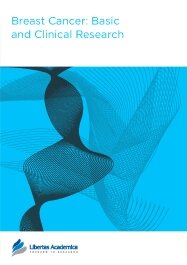

Publication Date: 27 Mar 2011
Type: Original Research
Journal: Breast Cancer: Basic and Clinical Research
Citation: Breast Cancer: Basic and Clinical Research 2011:5 43-52
doi: 10.4137/BCBCR.S6128

Background: To compare breast volume measurement techniques in terms of accuracy, convenience, and cost.
Methods: Breast volumes of 30 patients who were scheduled to undergo total mastectomy surgery were measured preoperatively by using five different methods (mammography, anatomic [anthropometric], thermoplastic casting, the Archimedes procedure, and the Grossman-Roudner device). Specimen volume after total mastectomy was measured in each patient with the water displacement method (Archimedes). The results were compared statistically with the values obtained by the five different methods.
Results: The mean mastectomy specimen volume was 623.5 (range 150–1490) mL. The breast volume values were established to be 615.7 mL (r = 0.997) with the mammographic method, 645.4 mL (r = 0.975) with the anthropometric method, 565.8 mL (r = 0.934) with the Grossman-Roudner device, 583.2 mL (r = 0.989) with the Archimedes procedure, and 544.7 mL (r = 0.94) with the casting technique. Examination of r values revealed that the most accurate method was mammography for all volume ranges, followed by the Archimedes method.
Conclusion: The present study demonstrated that the most accurate method of breast volume measurement is mammography, followed by the Archimedes method. However, when patient comfort, ease of application, and cost were taken into consideration, the Grossman-Roudner device and anatomic measurement were relatively less expensive, and easier methods with an acceptable degree of accuracy.
PDF (1.62 MB PDF FORMAT)
RIS citation (ENDNOTE, REFERENCE MANAGER, PROCITE, REFWORKS)
BibTex citation (BIBDESK, LATEX)
XML
PMC HTML

The submission process for manuscript publication in Breast Cancer: Basic and Clinical Research is as easy as A,B,C! Any minor hiccups I encountered were quickly addressed by Libertas' expert staff via prompt emails, and the timelines between initial submission and publication are surely the shortest on record! I will definitely be submitting future manuscripts to this journal, and look forward to working with their professional and expert team.

All authors are surveyed after their articles are published. Authors are asked to rate their experience in a variety of areas, and their responses help us to monitor our performance. Presented here are their responses in some key areas. No 'poor' or 'very poor' responses were received; these are represented in the 'other' category.See Our Results
Copyright © 2013 Libertas Academica Ltd (except open access articles and accompanying metadata and supplementary files.)
Facebook Google+ Twitter
Pinterest Tumblr YouTube